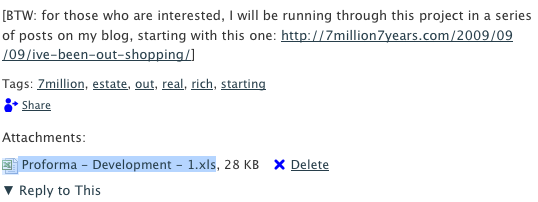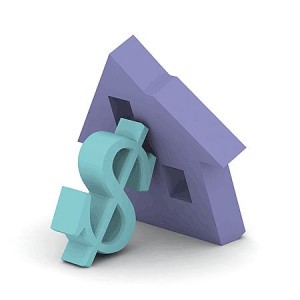 These exist all over the world …
These exist all over the world …
… the idea for aspiring home owners is appealing; rent a home for a few years, and a portion of your rent is applied towards your eventual – if you want to – purchase of the house:
– If you decide that you don’t want the house, then simply vacate when your lease runs out, just like any other rental, or
– if you do decide to go ahead and buy, then a portion of the rents paid to date go towards your purchase of the house
… you may even have built up enough in ‘rental credits’ to count as a deposit, then all you need to do is go cap-in-hand to the bank for a mortgage for the balance.
Appealing? Certainly.
But, watch out for the sharks – and, there are plenty, as consumer advocate, Neil Jenman points out:
Here is a simple fact: ‘Rent to Buy’ schemes are dangerous scams. They are designed by predators who prey on the poor. They are a complete rip-off and should be outlawed.
Like all slick scams, ‘Rent to Buy’ schemes are so seductive. The pitch goes like this: We are here to help you. We have a unique system. If the banks reject you, we can help you.
And on and on and on it goes. One twisted truth after another. The straight truth, however, goes as follows. Victims of these scams (many of whom do not even realise they are victims until it’s too late) are ripped off in three ways.
First, they are charged an exorbitant amount of rent. Astonishingly, [one ‘rent to buy’ promoter] openly admitted yesterday that his rents are “double” the market rent.
Second, as well as the exorbitant rent, the “buyers” (victims) pay an exorbitant price for the home. The purchase price being asked for a home [that we recently looked at] was $380,000. [Yet a] local agent estimated its real value at between $250,000 and $270,000.
So, on top of the double rent, the victims are also paying at least $100,000 too much for the home.
From the moment they sign up … they have instant negative equity (meaning they owe at least $100,000 more than their home is worth).
The third rip-off with the ‘Rent to Buy’ schemes is that the buyers are not the owners of the homes they are buying. No, the homes remain in the name of the rogues running the scams. Quite simply, this means that if the buyers pay the rogues and the rogues go broke or their companies collapse (as many do) then the buyers – who have done nothing wrong – are instantly evicted.
These schemes (sorry, scams) are just a variation of the notorious wrap schemes which were once promoted by get-rich-quick spruikers
So, the message is clear: be very aware of both the market prices for rentals and sales of similar homes before you even think about entering into such an arrangement.
On the other hand, let’s say that you do have a property that you want to rent out; offering ‘rent to buy’ for your prospective tenants can be an interesting option to ‘buy and hold for you’ …
… let’s say that you have purchased a new condo ‘off the plan’ and want to take advantage of the depreciation allowances (which are are strongest in the first 5 years), but don’t want the hassles of tenants not looking after the property and having to rent the property every 12 months or so to a new tenant.
In this case, offering rent to buy can be an interesting option; you could:
1. Find a young professional – or, young couple – with good credit and good job prospects,
2. Offer them market rent (towards the top of the range for your property type and area),
3. Give them a 5 year lease, with 12 month options (which means that they are no worse off than if they signed a simple 12 month lease at market rates)
4. After 5 years [AJC: or, at each lease renewal after Year X], credit a % of their rent towards the purchase of the house.
Now, think about this:
If your tenant stays for a number of years, and looks after the condo as though it will be their own, you won’t need a property manager, nor will you spend nearly as much in repairs and maintenance, nor will you suffer the usual 5% to 10% expected vacancy rate – and, you may be able to get away with something approaching ‘top rent’ (but, still within the market) for your area.
Now, isn’t that worth crediting 10% to 20% of the total rent payments towards their purchase if they stay the full 5 years?
Then, you get to sell the condo to them at market rates (as assessed by a licensed appraiser) LESS (say) another 5% to 10% (after all, you don’t need to spend any time and money of Realtor commissions, marketing, advertising, etc. (and, perhaps, have the property vacant while you do so).
The downside?
Well, what if they don’t stay the full 5 years? You still get top market rents … how can THAT be a bad thing?
How about property condition? Well, one of the clauses should stipulate that the tenant shares in the cost of any ‘wear and tear’ to bring the property back to selling condition (this can come out of the ‘deposit fund’ that you have been building up for them), because you still need it to appraise well. And, the tenant remains solely responsible for any UNFAIR wear and tear (e.g. damage that they have caused).
Sweet deal for both you and the renter/purchaser?
You betcha’ … IF you are ethical, and careful in your tenant / potential purchaser selection. Don’t forget, you get to take up all of those juicy depreciation allowances, then sell just in time to do it all over again … just make you cover off all of the bases with a good REAL-ESTATE SPECIALIST attorney and tax advisor 😉




 Today, I want to share one of my secret weapons for purchasing real-estate: it absolutely kills
Today, I want to share one of my secret weapons for purchasing real-estate: it absolutely kills  I have been asked, by way of two comments to this
I have been asked, by way of two comments to this  Just as a young man’s fancy turns to you-know-what when spring is in the air, this not-so-young investor’s fancy turns to real-estate as soon as he arrives back in the home country.
Just as a young man’s fancy turns to you-know-what when spring is in the air, this not-so-young investor’s fancy turns to real-estate as soon as he arrives back in the home country.

 Money Monk
Money Monk OK, it may be me who may carry the disease … I may be jaundiced by my experiences with partnerships, but frankly I don’t see the need.
OK, it may be me who may carry the disease … I may be jaundiced by my experiences with partnerships, but frankly I don’t see the need.